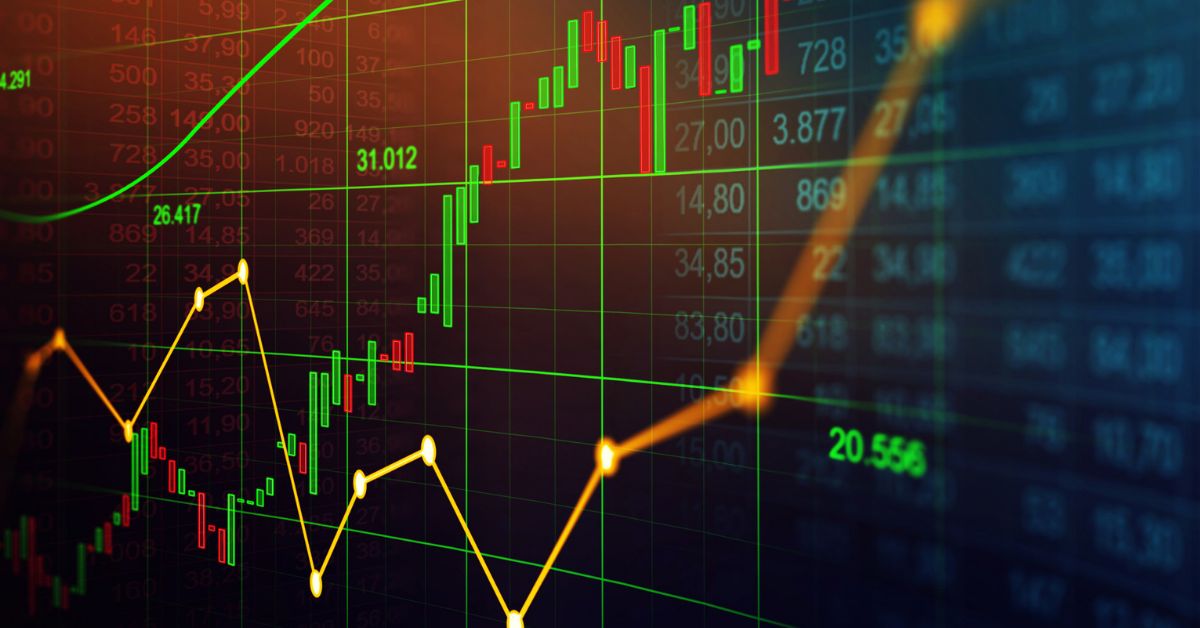The fast-paced world of trading requires you to master your emotional and psychological responses. Many traders are familiar with the problem of ”tilt trading” where emotions drive decision-making rather than strategy and logic. It can lead to impulsive actions and significant losses, so traders need to recognize and manage this effectively.
The Prime XBT platform offers advanced tools and resources to help traders manage trades and minimize emotional decisions. Prime XBT provides traders with the support they need to avoid tilt trading pitfalls. So, join PrimeXBT today! Use promo code PRIMEOTT to receive a +7% bonus on your deposit.
Tilt can make a big difference in your trading success if you recognize it and manage it. Therefore, in this blog post, we’ll look at tilt trading, its causes and consequences, and effective ways to prevent and handle it, making sure you can trade with more confidence. Let’s get started.
What is Tilt in Trading?

The term tilt trading refers to a psychological state in which traders’ emotions interfere with their judgment. Trading at this stage often involves impulsive actions due to frustration, anger, or overconfidence instead of a well-planned strategy.
Emotional stress can lead to risky trades, deviations from the trading plan, and, ultimately, substantial losses. It happens when traders lose track of their usual disciplined approach because of heightened emotions.
History of Tilt in Trading
The concept of tilt comes from poker, where emotional frustration leads players to make dumb decisions. Traders have adopted this term to describe similar emotional disruptions in trading.
When you understand the historical context, you’ll see that tilt is not new but has been observed across a wide range of high-stakes competitions. In trading, tilt can arise from consecutive losses or unexpected market movements, and it has become a focus for improving trading psychology.
Causes of Tilt Trading
A combination of emotional, psychological, and external factors often contribute to tilt trading. Let’s take a deep look at them:
Emotional Factors
Emotional reactions often trigger tilt trading. When trades do not go according to plan, stress and frustration are common culprits. One loss can lead to a cascade of negative emotions, causing traders to make irrational decisions.
Another emotional factor that can lead to tilt is overconfidence. If traders have a streak of wins, they might get overconfident and take too many risks, leading to significant losses.
Psychological Factors
Psychological biases play a crucial role in tilt trading. For example, the “recency effect” can lead traders to focus disproportionately on recent events, influencing their decision-making process.
When a trader has experienced recent losses, they might overcompensate and take bigger risks to make up for them. In addition, cognitive biases like confirmation bias, which reinforces pre-existing beliefs, can lead to poor decision-making during tilt.
External Factors
External factors such as market volatility and unexpected news events can also contribute to tilt trading. Sudden price movements or economic announcements can throw traders off guard, leading to panic or rash decisions. News outlets and social media can amplify these effects, with sensational headlines boosting emotions.
Signs and Symptoms of Tilt Trading

The key to identifying tilt trading is to recognize both behavioral and emotional changes in a trader’s approach. Now, let’s examine some of the signs in more detail.
Behavioral Indicators
It is important to observe specific changes in behavior to recognize tilt trading. Increased risk-taking is one of the common signs. Traders who have tilt may make trades that deviate significantly from their usual strategy, often taking on more risk than they would normally.
Additionally, impulsive decisions have become more common. An investor may make several trades in quick succession without proper analysis to recover losses or take advantage of short-term opportunities.
Another behavioral indicator is a shift in trading patterns. Traders who are usually systematic and strategic may make erratic and unpredictable trades. The deviation from established patterns can be a sign that emotions are influencing their decision-making.
Emotional and Psychological Signs
The psychological and emotional effects of tilt trading are just as visible as the actions themselves. Traders may feel heightened anger, frustration, or desperation, which manifests in their behavior. When poor performance triggers emotional distress, it can create a negative feedback loop.
In addition to emotional turmoil, tilt trading can affect your mental health. Traders might experience stress, anxiety, or burnout if it becomes a recurring problem. Mental health problems can affect trading performance and long-term performance, so it’s crucial to get help as soon as possible.
Consequences of Tilt Trading
Tilt trading can have far-reaching effects on both financial performance and psychological well-being. Traders may lose money when they make impulsive, risky decisions that deviate from their strategy. Psychologically, it can lead to stress and frustration, affecting your mental health and trading performance.
Financial Impact
Tilt trading can have severe financial consequences. Investors who act on impulse rather than strategy risk significant monetary losses. Tilt, for example, leads traders to make high-risk trades or deviate from established risk management rules, resulting in substantial losses.
It can erode trading capital and lead to a cascade of poor performance, potentially jeopardizing long-term trading success. Continuous tilt trading can deplete a trader’s account, which leads to stress and financial instability.
Psychological Impact
Tilt trading has equally profound psychological effects. Traders who experience tilt frequently may experience increased stress, anxiety, and burnout. Poor trading decisions can lead to a decline in mental health and overall well-being because of the emotional strain.
It can cause a negative feedback loop in which poor psychological health exacerbates trading mistakes, further increasing stress. Trading success depends on keeping a healthy mental state, so it’s essential to deal with and manage tilt.
Strategies to Avoid and Manage Tilt Trading

You can manage tilt trading effectively with self-awareness, emotion regulation, and strategic planning. It’s easier to improve your performance if you recognize the early signs of tilt and implement structured approaches. You can avoid and manage tilt trading with these strategies:
Self-Awareness and Monitoring
Self-awareness and constant monitoring are the most effective ways to avoid tilt trading. A trader should regularly assess their emotional state and recognize early signs of tilt. In this regard, keeping a trading journal can be helpful.
When traders document their trades, they can identify patterns and triggers that lead to tilt. As a result, traders are able to deal with issues before they escalate.
Emotional Regulation Techniques
Managing emotions is essential to preventing tilt in trading. Meditation and mindfulness are two techniques that traders can use to maintain emotional balance.
Regular breaks during trading sessions can also reduce stress and prevent burnout. In addition, exercising, getting enough sleep, and eating right can improve your emotional stability.
Use a Decision-Tree
A decision tree can help you avoid tilt trading by offering a structured framework for making informed decisions. The tool outlines potential actions and their consequences, helping you remain objective and adhere to your strategy.
Following a decision tree lets you systematically evaluate trades based on predefined criteria, so emotions don’t play a big role. This method allows you to make logical decisions that are aligned with your overall trading plan.
Developing a Trading Plan
Having a well-defined trading plan is crucial to maintaining discipline and reducing tilt. The plan should include strategies for managing risk, guidelines for handling losses, and rules for entering and exiting trades.
The structure of a trading plan reduces the likelihood of traders making impulsive decisions based on emotions. It’s essential to keep reviewing and adjusting the plan based on performance and market conditions.
Hold Yourself Accountable
Maintaining accountability is crucial to avoiding tilt trading. You should set clear trading goals and review your performance on a regular basis. Keep a trading journal to keep track of your trades and emotions so you can reflect on your mistakes and successes.
If you need objective feedback on your trading plan and goals, share them with a trusted friend or mentor. If you stick to your plan, you’ll keep disciplined and reduce the chance of emotional trading mistakes.
Using Technology and Tools
Leveraging technology can help manage and prevent tilt. Traders can track their trades and monitor their emotional states using various tools and apps.
Trades can also be executed automatically based on predefined criteria, which reduces the influence of emotions. Tools like stop-loss orders and position size calculators can make sure trades stay within acceptable risk limits.
FAQs
How to avoid going on tilt?
Maintain self-awareness and monitor your emotional state in order to avoid going on tilt. Develop a well-defined trading plan with specific entry and exit rules and risk management strategies. Meditation, mindfulness, and regular breaks are all techniques you can use to regulate your emotions.
You can identify triggers by keeping a trading journal to document your trades and emotions. Utilize technology and tools like automated trading systems and risk management tools to minimize emotion-driven impulsive decisions.
Conclusion
The effects of tilt trading can be significant for both your psychological and financial well-being. If you understand its causes, recognize the signs, and implement effective strategies, you’ll be able to maintain discipline and improve your trading performance. To avoid tilt trading pitfalls, stay self-aware, regulate your emotions, and follow a structured plan.
If you’re tired of losing money because of tilt trading behaviors like panic selling, FOMO, or overtrading, try Vestinda. We recommend the Vestinda trading app as it will eliminate emotional decision-making with automated crypto trading strategies. Get Vestinda today to enhance your trading experience and maintain discipline!



